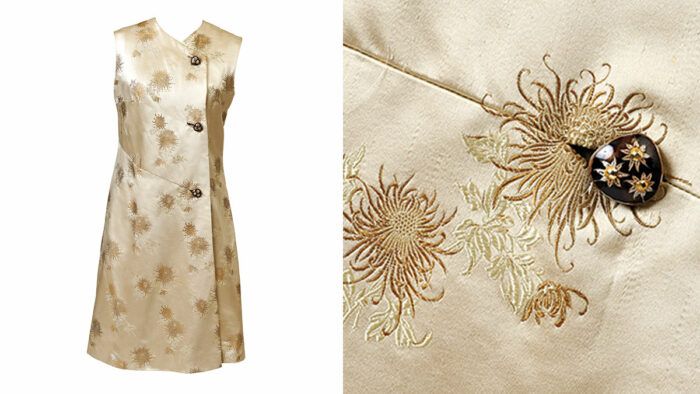A Vintage Dress Reveals the Maker’s Superior Sewing Skills
There's no need for a separate pattern
This champagne-colored brocade dress was made from a 1966 Vogue Couturier Design pattern by Italian designer Irene Galitzine. The garment’s maker, a home sewer who lived from 1914 to 2003, was not known to have taken sewing lessons, yet she enjoyed creating dressy garments for herself and her daughter and sewing tailored suits for her brothers. Although she was the only one in her extended family to sew, she was talented and had a dedicated sewing room. The dress features many hallmarks of sewing expertise, including bound buttonholes and perfectly matched motifs on the front. It’s a fine example of how skilled home sewers can be, even without extensive formal training. Read on to learn more about this dress from Threads Magazine #215.

The dress shown on the back cover was made by the mother of a friend of a friend. A talented “amateur,” this dressmaker reveled in using couture techniques to make each garment special. When the dress was given to me, I took a close look at how it was made. I came away impressed with the dressmaker’s skill. She used several construction tricks I had never seen before.
For this example, she began with Vogue Couturier 1591, a pattern from 1966 created by Irene Galitzine. The design has a classic mid-1960s shift silhouette, with an asymmetrical front opening and diagonal seams from the right underarm to the left hip. This view finishes just above the knee (there is a floor-length view as well), and the maker opted for a sleeveless version with faced armholes. In addition to two bound buttonholes, a third buttonhole is formed by an opening in the diagonal seam.
The dressmaker chose silk-satin brocade with a woven pattern of…
Start your 14-day FREE trial to access this story.
Start your FREE trial today and get instant access to this article plus access to all Threads Insider content.
Start Your Free TrialAlready an Insider? Log in






































What a nice little article, I like that it looks more closely at the construction. It's also inspiring to know a home sewer did that!